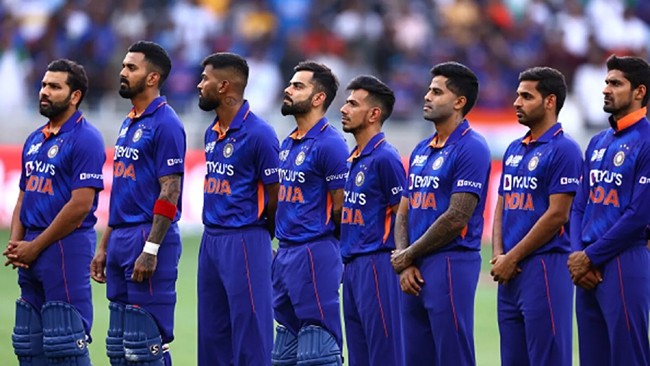
Navigating controversies in sports: A guide to effective PR strategies
31 Oct 2023, By Theja Ram - Content Director & Senior Manager Servicing
Sports are an essential entertainer across the world. And for most countries, the love for sports is an emotion. Fans cheering at the 2023 Cricket World Cup in India is just an example of how sports brings crowds together. But things aren’t always hunky-dory.
When controversies strike, it’s often difficult for the people involved to break out of the negative publicity. Controversies in sports have always existed. From doping to match-fixing and more. It only takes one bad headline for the cards to crumble in this high-stakes industry.
In more recent times, we’ve all seen headlines like, “Rock-bottom reality: Qatar’s $360 billion World Cup disaster laid bare as final humiliation revealed” or “The Qatar World Cup Is Already Going Viral For All The Wrong Reasons” The numerous missteps that occurred during the 2022 FIFA world cup is still being talked about.
Reality is such that controversies will always occur. All it takes is one small misstep, making crisis management an important tool for businesses in the sports industry — be it teams, players or organisations backing them.
Here’s how to effectively navigate controversies in sports — be it a team, player or businesses backing them.
Being prepared for a crisis
Crisis can occur at any time. It could arise from a social media post, a statement or even a picture. It pays to have a team in place to vet potential crisis situations and prepare for it in advance and have a response plan in place. The first step is creating a handbook for handling crisis situations that maps out potential scenarios well in advance. This is where PR comes in. PR professionals are experienced in tackling challenging situations on the go and their expertise can help tackle sports controversies with the right blend of proactive and reactive strategies, ensuring the response is in line with the brand’s value and doesn’t affect stakeholder sentiments.
Strong media relations and a social media plan
PR helps sports brands foster positive relations with the media. In case of a crisis situation, these relationships, cultivated over time, go a long way in telling the brand’s story, turning the crisis into an opportunity for positive outcomes. For instance, In 2020, Indian cricketer players Hardik Pandya and KL Rahul faced controversy for allegedly making inappropriate comments about women during a talk show, causing widespread criticism. The Board of Control for Cricket in India (BCCI) reacted swiftly, suspending both players and issuing a strong statement condemning the remarks while emphasising their dedication to respecting women. BCCI officials held press conferences to address the issue, explain their actions, and stress the importance of upholding a positive image for Indian cricket. Amidst this controversy, effective media relations and a social media plan helped the BCCI showcase itself and the Indian cricket team as a whole in a positive light.
Engage with stakeholders
In times of crisis, sports brands, be it players or teams, have an added challenge of tackling sponsors and brand collaborations, perception among fans, outcomes from regulatory bodies and more. It’s at such times that the right people need to engage the stakeholders, ensuring these different relationships in play are engaged in the right way to avoid lost business. PR helps identify the right spokespeople and messages that can curtail the blowback on the brand’s image significantly, ensuring it doesn’t hamper sponsorship and brand deals.
Working closely with legal teams
Crisis situations always need strategic reactions. Sometimes, it's good to react quickly, while at others it’s better to bide time. This depends on what’s at stake and how likely stakeholders are to react to the crisis. Working closely with legal teams helps PR teams and spokespeople effectively communicate their message in a legally-binding manner to avoid lawsuits and reputational damage arising out of legal issues.
Measuring the success of a crisis management strategy
PR can go a long way in Identifying whether stakeholders’ perception of the brand has changed after a controversy and also identify narratives to rebuild the brand image. When we look at the controversy surrounding Hardik Pandya and KL Rahul, the BCCI actively used social media to denounce the comments and reinforce their commitment to gender sensitivity and respect for women. The organisation also partnered with gender equality groups, launching educational programs and campaigns to promote awareness and sensitivity. This strategic approach demonstrated accountability, raised awareness, and contributed to the gradual rebuilding of the players’ image through their apologies, all while reinforcing BCCI’s commitment to respect and a positive image for Indian cricket.
When in crisis, sports organisations need PR to mitigate the damage as much as possible. Even if legal ramifications are safely off the table, there are leagues/governing bodies, sponsors, players, and fans to consider. Leagues can exact heavy punishment for organisations implicated in scandals, and sponsors can sever ties en masse.
Players and fans can become disillusioned with their teams when crises aren’t dealt with properly or in a timely fashion, spawning both financial and performance consequences. Whatever the crisis may be, sports organisations should review their own compliance and response processes to ensure crises are avoided, and if they occur, they are handled appropriately. It is this final step where PR plays a major role — when handled correctly, it can mitigate reputational damage and also find effective solutions in rebuilding image, which is central to the sports industry.
